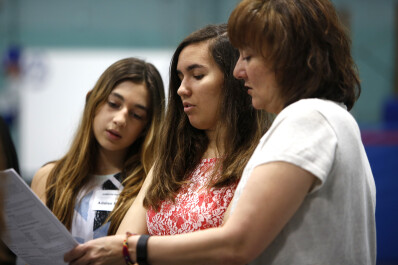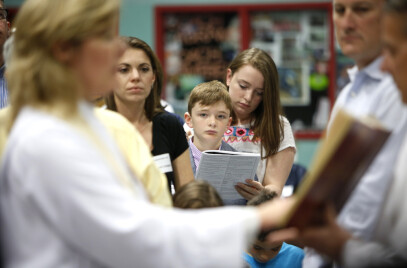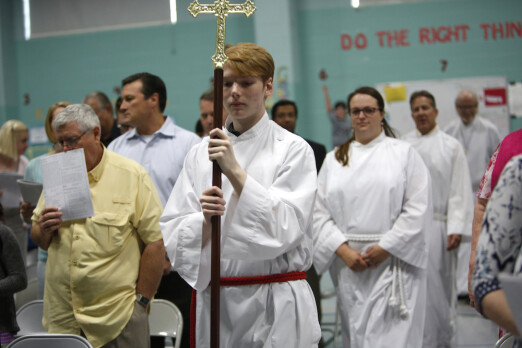The Seminal Work of Church Planting
Church planting begins with a dream, God’s dream.
If you’re a church planter you remember the moment you caught that dream, like a seed on the wind, and realized you were supposed to do something with it.
There was probably a period of time where the vision became rooted and established in your heart.
It grew.
And before long, you held it up to your lips, drew in a breath, and cast that vision wherever the wind would take it, like blowing dandelion seeds.
I’ve titled this post “Seminal Work” because of the dual meaning of seminal. It’s related to seed, and it also means containing or contributing the seeds of later development.
Everything else flows from this. The work you do as a church planter sets the DNA and it replicates. All the work that comes afterward relates to what you do right now.
Your job is to keep that vision and to cast it. I’ve been church planting for three years now. We’re just two years into offering Sunday services. That’s long enough to have learned important lessons but recent enough to offer fresh material. I hope to present a survival guide for the courageous souls willing to do this work even when told there is a 80% failure rate.
Give It Time to Germinate
While the 80% failure rate is an often quoted statistic, no one can point to a source. Ed Stetzer, a leading evangelical church planter, paints a different picture. In his reports on the State of Church Planting in the United States (2008 & 2015), he notes that 68% of church plants are still around at the 4-year mark and that the majority of them don’t break the mark of 100 people average Sunday attendance (ASA) until that 4-year mark:
Year 1: Average 51, median 30
Year 2: Average 74, median 45
Year 3: Average 95, median 60
Year 4: Average 124, median 72
Those numbers reflect multiple denominations, but don’t include my denomination, the Episcopal Church. Still, we’re happy to have better attendance than that median number each year (only 2 years of worship attendance data) and we’re in a healthy financial position so we are ready to build as soon as our diocese can secure land.
A recent church plant in my Diocese, St. Andrew’s in McKinney, shared their data from the feasibility study done in 2009 to determine if they were ready to build, and we made that our mark to aim for. They had 77 families representing about 300 people and an annual budget of around $250,000.
At our church plant, we’re in a very different context, in fact, the hardest church planting context: a parachute drop model in a replant situation. We aren’t planting on the fringe of a developing community. We’re a replant of our diocese in a community that is about 35 years old. In other words, we’re competing with 35- year-old, corporate/resource-sized churches that can offer more programs than we could manage.
Despite the challenges, we’ve carved out a unique corner of the market, and we’re very blessed to be planting in a context that is highly educated and high earning. Our numbers reflect the difference in context. We have 61 families representing 104 members, but a similar sized budget, and we’ve been able to save $180,000 as seed money to secure a building loan.
How have we been able to do that? It all comes back to vision. One thing the Diocese has noted about our plant is that our vision has remained constant. We’ve never wavered or adjusted it and all our ministries flow from it.

It’s All in the Name
Our Church was very close to being called St. Mary Magdalene's. But, it seemed a little too on the nose for me. I am the first female church planter in my diocese. And, Mary is a bit much to live up to as the Apostle to the Apostles. As my friend and Franciscan Friar, Br. Tobias puts it, “During the period between encountering Christ and informing the others, Mary Magdalene was the Church. The ENTIRE Church.”
Ultimately we decided the Resurrection is the point. "Resurrection” is the Greek word “anastasis,” which means “standing up again.” When we asked ourselves who we wanted to be we decided: We are the church of get back up! We are Resurrection people.
We wanted a mission and vision that captured that. So we asked ourselves, what are we doing?
We landed on Living Faith that Transforms Our World. This reflects the Great Commission’s call on all disciples in all of their ministries, whether that is to be a banker or accountant or school teacher in West Plano.
We are disciples who demonstrate a living faith … a faith that demonstrates God’s resurrection power, the power to get back up. This of course resonated with our story of being in a replanting situation. It all fit. It empowered us and gave us purpose.
You Can’t Measure the Essence
Metrics are important, but they are ancillary, and they are slow. We don’t know how to measure the impact of the Gospel on lives or the degree of transformation that’s happening in a human heart.
All I can tell my Bishop is that he’ll be confirming nine adults and baptizing two children when he visits us in September.
I was deeply impacted by another priest, Fr. Greg Methvin, several years ago. He shared the best immeasurable metric I know: “When I die, I don’t think Jesus is going to ask me what my ASA was. I think he’s going to ask me what kind of disciples I made, because that’s what he told me to do.”

So we asked ourselves what kind of disciples we wanted to make. We looked at the life of Jesus and what we saw him doing. We thought about what he told us to do. We came down to four things that we believe make good disciples and those became our four core values: Service, Stewardship, Storied People and Sharing.
We do all of them all the time, but we determined to focus on one value each year and keep rotating through them until we embody them. Our hope is that as we journey along, we begin to look more and more like Jesus.
Creating your framework
Whatever you do first is most important. That becomes your DNA.
We started in June 2016 so the remainder of that year was all about Service. We started as disparate small groups. A few were gathered for Bible Study. A few just met each other at informational meetings held in local restaurants. A few began to gather in my home.
I was blowing those seeds and casting the vision everywhere I could teach or preach.
Our groups came together around service projects. At each service project, they met new people who were part of other groups. Service is what we did together. We had at least one missional service focus per month. And now, even if I die suddenly, I know this congregation will ask where or who they are serving this month if someone doesn’t put it on the schedule!
BLESS Model
It was important to provide a structure and theology for disciples as I gathered them. They would be so excited and the next thing they would want to know is what to DO. So we told them about our BLESS Model for Evangelism.
When God called Abram and changed his name to Abraham (Gen 12), he told him blessing was how his new endeavor would spread and that blessing was what it was all about. So when people wanted to know what to do, we told them we wanted them to BLESS people, which was an acronym for Be, Listen, Eat, Serve, and Share.
BE authentic
LISTEN to what people need
EAT –- something magical happens in the act of breaking bread with someone
SERVE –- If you listened well then you know how to serve them
SHARE your story of encountering the risen Lord, whatever that looks like in your life. Tell them the good news and invite them.
Stewardship
In 2017 we focused on Stewardship. Stewardship we defined as “All that I do with all that I am, after I say, ‘I believe.’” I got that gem from Glen Mitchell’s ministry, “Growing Good Stewards.”
We studied stewardship and began to see ourselves as bearers of treasure in jars of clay. We looked at our spiritual gifts and how God shaped each of us for ministry. And near the end of that year we had our first pledge campaign.
In the Episcopal Church, about 55% of a congregation pledges on average. Our average was 85%. Our success was based on the belief of helping our members understand why before asking for donations.
Storied People
Our focus was being Storied People in 2018. We did a lot of Bible study and I added a Spiritual Director to the staff to direct retreats and lead small groups to discover how their story intercepted with God’s story. All our preaching, teaching, and small groups were about equipping people with that knowledge.
Sharing
This year has been about Sharing. People feel formed enough in their discipleship and feel secure enough in our identity, mission, and vision, that they are employing their gifts and leading ministries. Of course we’ve been doing that the whole time but it’s our special focus and intention this year, and it starts at the top.
Living Faith that Transforms Our Families
Our Bishop’s Committee decided this year they wanted to equip families. Our tag line is “Living Faith that Transforms Our Families.”
One of our vestry members just retired from Plano ISD, and she offers her gifts in leading our children. She has set up a family resource center so parents are equipped to teach their children five or six core bible stories at home. She also has a helpful resource sheet for parents, including an app called “Parent Cue.” It cues parents about discipleship opportunities with their child, like in the car or at bath time, and gives them the short materials and ideas they need in those moments.
Another vestry member is a local counselor. We’ve built a new group of 22 people who came for his one-day marriage workshop or have joined our weekly small group that offers support and accountability as we work through John Gottman’s new book, “Eight Dates: Essential Conversations for a Lifetime of Love.” It’s about growing community. Doing a one-time event has rarely done much for us. What does work is getting them in and then inviting them into community.

Spreading the seeds
When you first start a church plant, so much is led by and initiated by you. Now, three years into it, and just two years of offering services, I see others scattering seed. They’ve caught the vision and are casting it too.
My prayer for all of you with seed for the sowing, is that you will have the vision and strength of conviction to do what Tod Bolsinger says is the call for all of us leading adaptive change: “start with conviction, stay calm, stay connected, and stay the course.”

